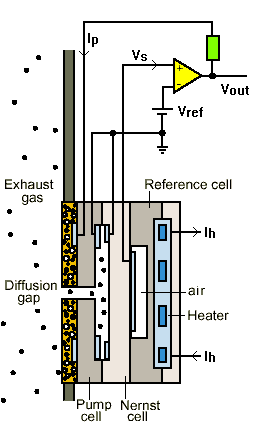Is it wideband/narrowband? Is it heated/unheated?
The wideband on my old car got located about 0.5-1m away from my turbos, as per TechEdge's recommendation. The factory O2 sensor on the wifes car is about 20cm from the back of the turbo.
I have an o2 sensor to mount somewhere after the turbo. Where do I out it to make sure it's the right
temperature?
Immediately after the turbo or with some gap?
Is it wideband/narrowband? Is it heated/unheated?
The wideband on my old car got located about 0.5-1m away from my turbos, as per TechEdge's recommendation. The factory O2 sensor on the wifes car is about 20cm from the back of the turbo.
Teh UZA80 - Project Century - Remotely p00'd by association
It's a wideband Bosch. Not sure about the heated thing, I think it's not.
If it's wideband it's most definitely heated. They need to be at a very precise temp to work, hence the complexity in the controller. 0.5m to 1m is where I'd put it.
Teh UZA80 - Project Century - Remotely p00'd by association











My LC-1 wideband is at the bottom of the dump pipe, just under & infront of the sump.
Make sure its welded in at a horizontal angle or tip downwards in the pipe.
Last edited by MWP; 02-02-2010 at 12:35 PM.
Daily: Toyota '05 Rav4 Sport
Projects: Celica GT4 ST185 (5S-GTE), Celica RA28 Celica (1UZ-FE)
Previous: Corona RT104, Starlet GT Turbo
Classic Celica Club of South Australia
The above opinion is just that - my opinion. It is not shared by any business that I am currently or have previously been involved with, nor any of their employee's.











Yup.
Otherwise condensation builds up around the base of the sensor and can rust/damage it.
Daily: Toyota '05 Rav4 Sport
Projects: Celica GT4 ST185 (5S-GTE), Celica RA28 Celica (1UZ-FE)
Previous: Corona RT104, Starlet GT Turbo
Classic Celica Club of South Australia
before first cat or first res/muffler is a good place.
the difference in response time between there are dump is negligible, and the lower heat will help.
http://www.bosch.com.au/content/lang.../Section_D.pdf
page 8 onwards
they say should be close as possible to the engine, respecting the maximum allowed temperature range, but..
edit: condensation can crack the ceramic sensor.....= bad
"I'm a Teaspoon, not a mechanic"
"There is hardly anything in the world that a man can not make a little worse and sell a little cheaper" - John Ruskin (1819 - 1900)
AU$TRALIA... come and stay and PAY and PAY!!! The moral high horse of the world!
I don't think this is a ceramic sensor (doesn't look like it, but I'm no expert)...
Either way, I"ll whack it someone where things won't build up..
My KE25 thread
WSID - 12.8@108mph || Wakefield Park - 1:11.4 || SDMA Hillclimb - 49.1
it is the Zirconia ceramic cell which makes it an oxygen sensor.
the wideband has an additional zirconia "oxygen pump" which sits over the narrow band inside it..
like this
narrow band looks liek this
the wideband is actually just a narrow band.. but with a second zirconia cell to pump air in or out of the space between the narrow band and the exhaust...
by measuring the current required to pump oxygen, to keep the inner narrow band at stoich, it can tell what the actual oxygen content of the exhaust is.....
err.. nerdily like this \/

"I'm a Teaspoon, not a mechanic"
"There is hardly anything in the world that a man can not make a little worse and sell a little cheaper" - John Ruskin (1819 - 1900)
AU$TRALIA... come and stay and PAY and PAY!!! The moral high horse of the world!
Farkk. That sounds all a bit confusing.. I'll try decipher that another day. :-)
Bookmarks